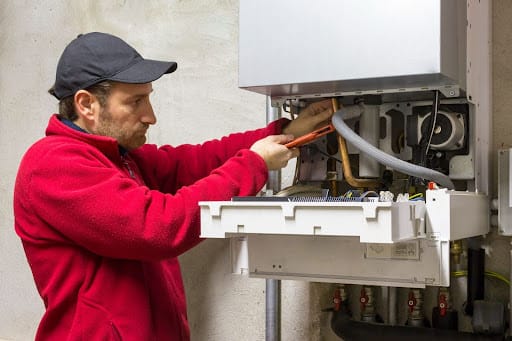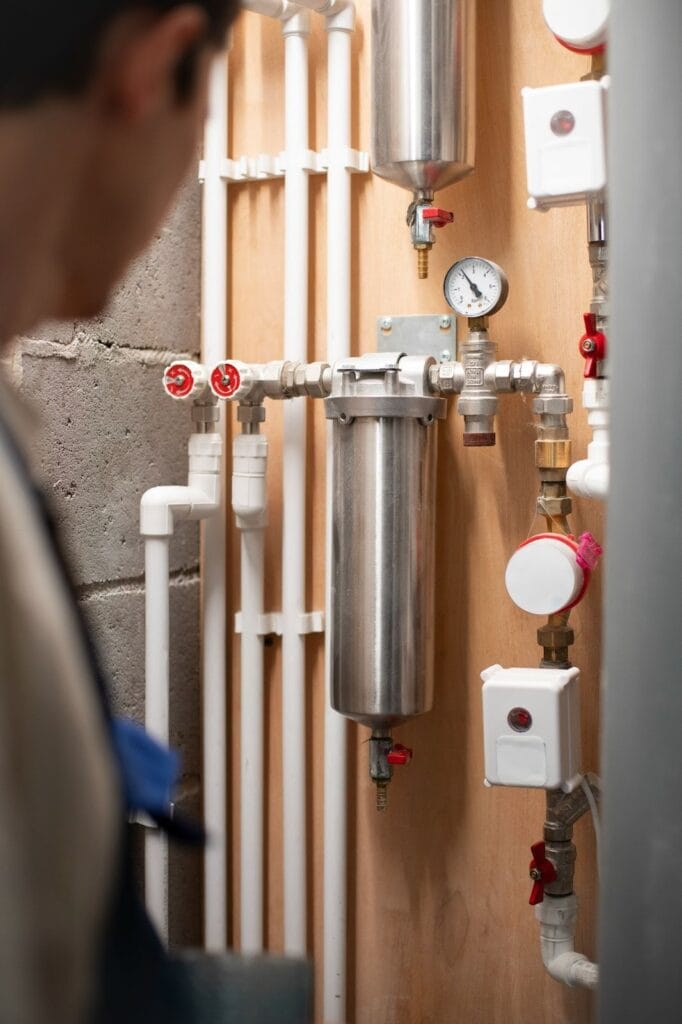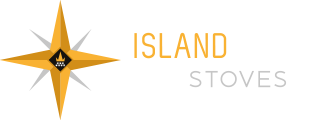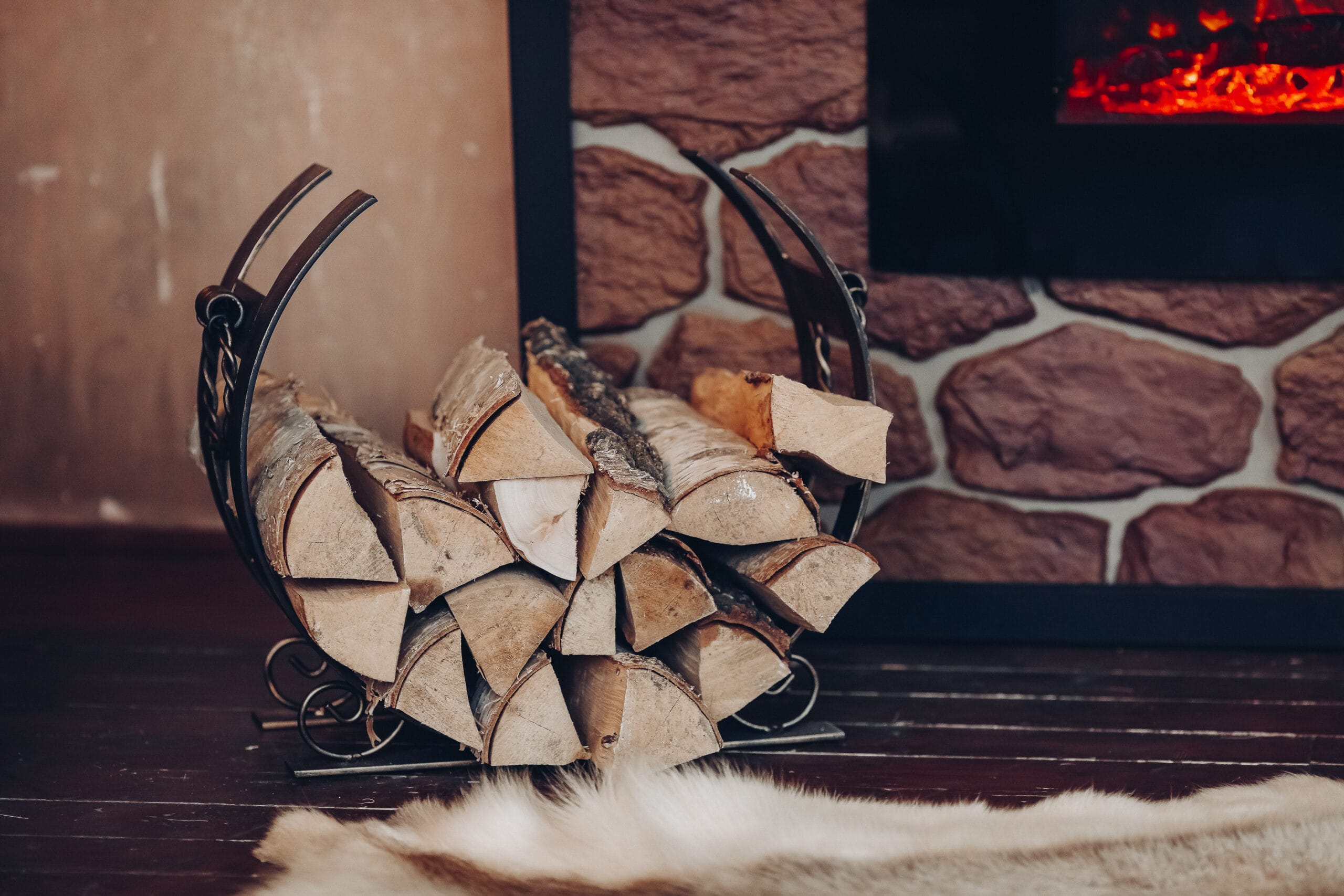Can You Fit a Back Boiler to a Wood Burner?
If you want your log burner to heat water as well as the room, you can do it with the right appliance and a safe, well-designed system. Below we set out the options that work in British homes, the rules your installer must follow, and the details that keep the system reliable.
Disclaimer: This article aims to provide general guidance for homeowners in the UK only. Always consult a HETAS-registered installer and your local Building Control.

What a Back Boiler Actually Is
A traditional back boiler is a water jacket built into or behind a stove or firebox. Heat from the fire warms the water, which can then supply taps or radiators. Today, most manufacturers approach the same goal with a purpose-built boiler stove or by linking a stove to a thermal store. Adding a generic water jacket to a dry wood burner is rarely compatible and often voids the warranty, so always check the manufacturer’s documentation in writing.
In surveys, we still encounter legacy back boilers hidden behind older fireplaces. If one remains sealed in place, do not light the fire until it has been removed or made safe by a competent person. The Health and Safety Executive has issued a specific warning about redundant back boilers, which can become dangerous if heated under pressure. See the HSE note on boilers and redundant back boilers.
The Rules that Matter in The UK
Your installer will design to Building Regulations Approved Document J. This covers combustion appliances, air supply, flues, hearths and suitable provision for appliances with water jackets. Read the government guidance on GOV.UK.
Installations in England and Wales are notifiable. Using a competent person scheme simplifies compliance and certification. HETAS publishes clear consumer guidance and maintains a register of installers. See the HETAS page on regulations and guidance.
Solid fuel circuits are typically open-vented or hydraulically separated when linked to sealed central heating. This protects against pressure build-up and provides a safe path for heat during a power cut. Your installer may specify a thermal store or plate heat exchanger to separate circuits where required, all documented in the design that is submitted for notification.
Three Routes and When They Make Sense
1. Choose a purpose-built boiler stove
This is a stove designed to heat both the room and water. It states the output split to room and to water, the flue size, the required controls and overheat protection.
Pros
- Engineered to do the job
- Manufacturer instructions support compliance
- Clearer path to sign off
Cons
- Higher upfront cost than a dry stove
- Requires heat dump capacity and careful control design
- If the room to water split is not matched to the space, the lounge can feel cooler than expected
2. Link a stove to a thermal store
A thermal store is a well-insulated cylinder that collects heat from one or more sources and then supplies domestic hot water through coils, and can assist central heating. With solid fuel, the stove side is usually open vented, while the rest of the system can remain sealed through hydraulic separation.
Pros
- Strong safety profile and good flexibility
- Smoother delivery of hot water and easier multi-source integration
- Future-friendly if you plan to add solar thermal or another heat source
Cons
- Needs cylinder space and tidy pipe routes
- More components and higher design effort
- Allow floor footprint roughly 600 by 600 millimetres for a typical 200 to 300 litre family store
3. Add a retrofitted back boiler to a dry stove
This is the path many imagine, but compatibility is limited, and warranties are at risk. Control is limited and harder to keep safe during power cuts. In most homes, we specify either a boiler stove or a thermal store link-up instead.
Pros
- May reuse your existing appliance if the maker approves it
Cons
- Often impractical
- Higher safety and compliance burden
- May reduce room heat in an unhelpful way
- Proceed only if the stove manufacturer confirms in writing that a rated water jacket is available for your model and states the warranty position

How The Plumbing Works in Practice
- The fire heats the stove’s water jacket.
- Hot water flows to a primary circuit or thermal store, either by gravity circulation or a pump, depending on the design.
- The store supplies domestic hot water through a coil and can feed radiators.
- A heat leak radiator or similar dump load protects against overheating during a power cut.
- Mixing valves, thermostats and safety valves manage temperature and scald risk.
If you have a sealed combi boiler and no hot water cylinder, expect your installer to specify a thermal store or a plate heat exchanger for separation. Solid fuel cannot be switched off at a tap, so pressure and heat must always have a safe escape path.
Case study: boiler stove to thermal store in a combi home
Property: 1930s semi, Worcester combi, no cylinder.
Design: 250 litre thermal store under stairs, stove on open vented primary, plate heat exchanger to sealed central heating.
Safety: Heat leak radiator in the hall, carbon monoxide alarm to BS EN 50291 tested at handover.
Outcome: Reliable evening hot water without firing the combi, quieter radiator cycling, Building Control notified via HETAS self certification.
Boiler Stove vs Thermal Store Options for UK Homes
| Your situation | Best fit | Why it helps | What to plan for |
| Renovating and want hot water plus some heating from logs | Boiler stove feeding a thermal store | Balanced comfort and flexibility | Space for the store and a heat dump path |
| Cylinder and radiators are already in place, and regular evening fires | Boiler stove on a vented primary | Straightforward and reliable | Correct pipe falls for gravity circulation and open venting |
| Combi boiler, no cylinder, limited plant space | Thermal store link up | Safe separation of sealed and open circuits | Floor area for the store and tidy controls |
| Dry stove and a wish for a quick add-on | Rethink the brief | Compatibility and compliance issues | Consider replacing it with a boiler stove or a store-based design |

Safety and design checklist
- Use a HETAS registered installer and insist on a written design with pipe routes, venting, control strategy, overheat protection and maintenance access. Check the register via the HETAS site.
- Follow Part J for air supply, hearth dimensions, flue sizing and lining, and suitable bases for appliances with water jackets. Start with the government overview on GOV.UK.
- Include a heat leak radiator and a safe, open-vented route for expansion on the solid fuel side.
- Fit carbon monoxide alarms to BS EN 50291 in the correct locations.
- Remove or safely decommission any redundant back boiler before the first fire, as the HSE advises.
Commissioning checks your installer should record
- Verify open vent and feed, and expansion connections are unobstructed
- Prove gravity circulation with the pump isolate,d and log flow and return temperatures
- Test the heat leak radiator operation at the overheat setpoint
- Set the blending valve to 50 to 55 degrees Celsius for safe hot water delivery
- Record the flue draught, spillage check and carbon monoxide alarm test
Advantages and trade-offs
What you gain
- A measure of energy resilience if the power is out, and you have gravity circulation and a dump load
- The option to integrate other heat sources later through a thermal store
- Comfort that feels steady rather than spiky when the store is sized well
What to weigh
- Added complexity and cost compared with a simple room heater
- Some output is diverted to water, so the room’s only heat is lower
- Value is best when you burn regularly in the heating season
Where Island Pellet Stoves fit, naturally
If your goal is reliable hot water and a cleaner, well-controlled burn with fewer day-to-day variables, consider a modern pellet system alongside log-fired options. Island Pellet appliances are designed for measured fuel delivery, consistent combustion and precise water temperature control, which helps when you need stable hot water as well as space heat. The brand’s guidance pages explain installation, venting and commissioning in clear terms.
Read the step-by-step overview on the Installation page, see how pellet systems compare with logs on Wood burning stoves vs wood pellet stoves, and browse answers to common user questions in the Frequently Asked Questions.
Why is this relevant to back boilers?
Back boiler projects rise or fall on control. Island Pellet appliances can modulate output and protect set temperatures with far less manual intervention, which makes linking to a cylinder or a store more predictable. They still require a competent installation, although the day-to-day experience is easier to live with if you want hot water on a schedule rather than only when the fire happens to be roaring.
A practical plan you can follow
- Define the brief in one sentence, for example, hot water for a family of four and a top-up to the radiators on winter evenings.
- Survey the space you have for a cylinder or thermal store, the flue route and the plant area for pumps and valves.
- Choose the architecture. Boiler stove to a vented primary, or a stove or pellet boiler linked to a thermal store that separates circuits.
- Ask a HETAS installer for a written design that references Part J, shows a safe heat dump and lists the control components by make and model.
- Plan an annual service, a chimney sweep schedule and user checks for alarms and valves.
Final Thoughts
Ready to sanity check your layout and cylinder space. Share your boiler type, flue route and available cupboard dimensions. Talk to us today, and a designer will map pipe runs, size a thermal store if needed and outline a Part J aware control plan you can hand to your installer.

